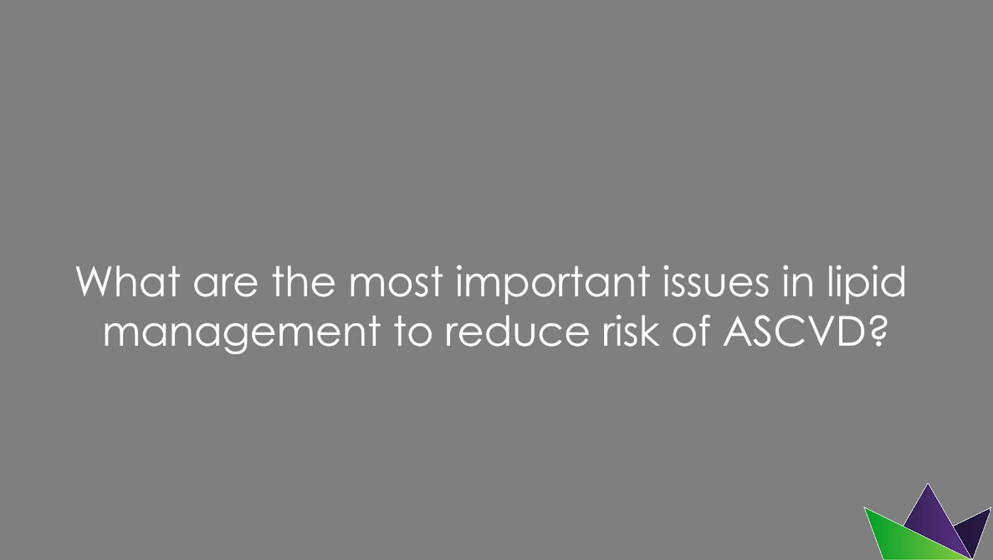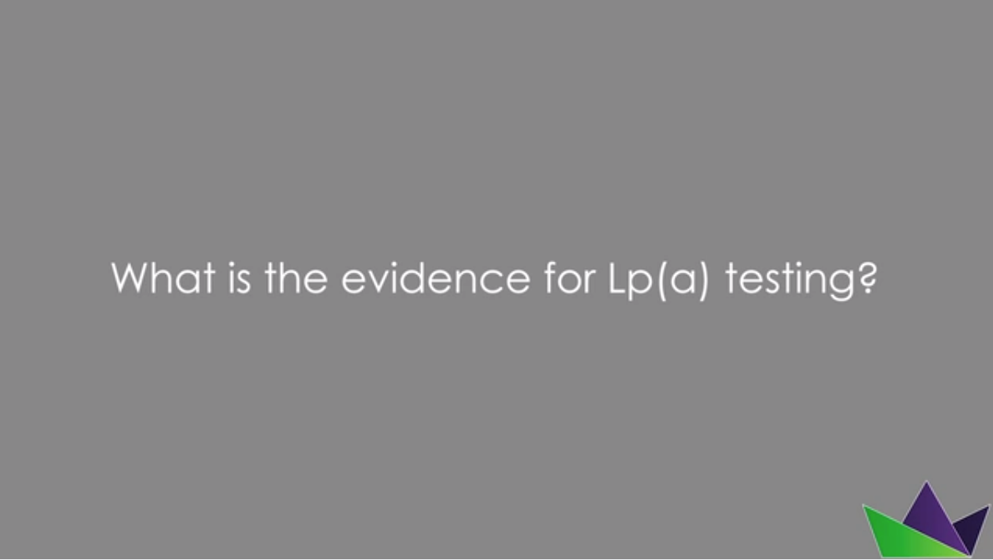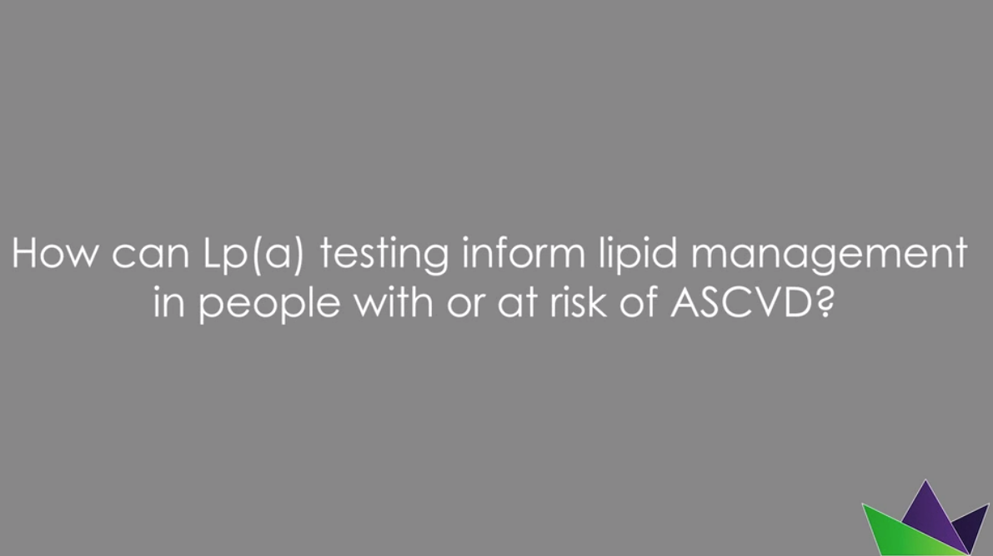
Lipids in ASCVD
In this section
The following articles cover how risk factors and risk assessment tools can inform decisions about lipid-lowering treatment and outline novel CVD risk factors that are currently under investigation.
About atherosclerotic cardiovascular disease
Atherosclerosis is a major cause of cardiovascular disease (CVD), characterised by gradual deposition of lipids and fibrous material that form plaques in arteries1,2. In atherosclerotic cardiovascular disease (ASCVD), progressive narrowing of arteries through the development of atheromatous plaques limits blood flow to the heart, brain and/or periphery, causing ischaemia. Disruption of plaques can trigger thrombosis and lead to acute, sudden blockage of arteries1,2. ASCVD encompasses coronary artery disease (CAD), cerebrovascular disease and peripheral artery disease, and is a major contributor to global CVD-related burden3,4. Clinical manifestations include myocardial infarction, angina, stroke or transient ischaemic attack and peripheral arterial disease3.
The global prevalence of CVD increased almost twofold from 271 million in 1990 to 523 million in 20195. Deaths due to CVD have also increased from 12.1 million in 1990 to 18.6 million in 20195. Both CAD and stroke are considered to have a devastating disease burden, accounting for an estimated 182 million and 143 million disability-adjusted life years (DALY) worldwide in 2019, respectively5. This impact is further amplified by economic consequences, including absenteeism from work, lost productivity and reduced life expectancy4.
The initiating event in the development of atherosclerosis is well established and results from the retention of apolipoprotein B (ApoB)-containing lipoproteins, mostly in the form of low-density lipoproteins and their resultant cholesterol cargo (LDL-C), in the arterial wall3. Thus, lipid lowering is an important strategy to reduce the underlying process that results in ASCVD3. There have been many advances in identification of ASCVD risk factors and expanded options for lipid-lowering treatments over the past few decades, but ASCVD still remains a major cause of morbidity and mortality6.
Risk factors for atherosclerotic cardiovascular disease
The main causal and modifiable risk factors for ASCVD are LDL-C and other ApoB-containing lipoproteins, high blood pressure, cigarette smoking and diabetes mellitus (DM). Adiposity is also considered an important risk factor6.
Alongside numerous other risk factors for ASCVD, potential risk modifiers should also be taken into account when assessing an individual’s CVD risk. These risk modifiers include family history of premature CVD, psychosocial stress, the level of coronary artery calcification (determined by coronary artery calcium scoring) and ethnicity, and can influence an individual’s risk of developing ASCVD6 (Figure 1).
Figure 1. Key risk factors and clinical conditions associated with increased risk of ASCVD, and potential cardiovascular risk modifiers6.
AF, atrial fibrillation; apoB, apolipoprotein-B; ASCVD, atherosclerotic cardiovascular disease; BMI, body mass index; BP, blood pressure; CKD, chronic kidney disease; COPD, chronic obstructive pulmonary disease; CVD, cardiovascular disease; DM, diabetes mellitus; HF, heart failure.
*Measured from a computed tomography scan3. †Carotid or femoral artery plaque burden on ultrasonography may be considered as a risk modifier, ifcoronary artery calcium scoring is unavailable or not feasible3,6. ‡Particularly if Asian, Black Caribbean, Black African or Chinese6.
CVD risk assessment tools
A number of tools are available to assess CVD risk, depending on the patient’s health status, comorbidities and history of CVD or ASCVD (Table 1)6.
Table 1. Risk factors considered in key CVD risk assessment tools recommended by European guidelines6-9.
|
ASCVD, atherosclerotic cardiovascular disease; CAD, coronary artery disease; CVD, cardiovascular disease; DM, diabetes mellitus; eGFR, estimated glomerular filtration rate; EUROASPIRE, European Action on Secondary and Primary Prevention by Intervention to Reduce Events; HDL-C, high-density lipoprotein cholesterol; hsCRP, high sensitivity C-reactive protein; MI, myocardial infarction; PAD, peripheral artery disease; PCI, percutaneous coronary intervention; SCORE2, Systemic Coronary Risk Estimation 2; SCORE2-OP, Systemic Coronary Risk Estimation 2-Older Persons; SMART, Secondary Manifestations of Arterial Disease; WHO, World Health Organization. |
|
| Risk assessment tool | Risk factors considered |
| SCORE2 For: Apparently healthy people* 40–69 years Estimates: 10-year risk of fatal and non-fatal CVD events |
Non-HDL-C Age Sex Systolic blood pressure Geographic risk region (based on WHO CVD mortality rates; for European and North African populations with available cohort data) |
| SCORE2-OP For: Apparently healthy people* ≥70 years† Estimates: 10-year risk of fatal and non-fatal CVD events |
|
| SMART For: Stable ASCVD (CAD, PAD or cerebrovascular disease) Estimates: 10-year risk of recurrent major vascular events (MI, stroke or CV death) |
Age Sex Systolic blood pressure Presence of abdominal aortic aneurysm, peripheral artery disease Years since first diagnosis of CVD HDL-C Total cholesterol eGFR hsCRP |
| EUROASPIRE For: Stable CAD Estimates: 2-year risk of recurrent CVD |
Country Age Diabetes status History of stroke, heart failure, PAD, previous PCI, depression, anxiety disorder Non-HDL-C eGFR |
Apparently healthy people
SCORE2 and SCORE2-OP risk prediction algorithms can be used to assess 10-year risk of fatal and non-fatal CVD events in apparently healthy people (those without established ASCVD, type 2 diabetes mellitus, chronic kidney disease, genetic/rarer lipid disorders or blood pressure disorders; Table 1)6. Both tools are calibrated to account for regional variations in CVD risk, across four clusters of countries in Europe and North Africa that are grouped by their level of CVD risk (low, moderate, high and very high), based on national CVD mortality rates published by the World Health Organization (WHO)6.
Considering a person’s age and their SCORE2 or SCORE2-OP output, the resulting CVD risk category can then inform decisions about treatment to manage risk factors6:
- Low-to-moderate CVD risk – risk factor treatment is generally not recommended
- High CVD risk – risk factor treatment should be considered
- Very high CVD risk – risk factor treatment is generally recommended and may be considered in apparently healthy people aged ≥70 years
For apparently healthy people at high or very high ASCVD risk, a stepwise treatment-intensification approach is recommended, aiming at intensive risk factor management6, considering lifetime CVD risk, treatment benefit for risk factors, risk modifiers that increase or decrease risk, comorbidities, frailty and patient preferences6. Healthcare professionals should also ensure they have an informed discussion with the patient about their CVD risk and the benefits of treatment, tailored to the individual’s risk profile and needs6.
More the about measurement of plasma lipoproteins to inform CVD risk
More about lipid-lowering treatment selection and considerations for specific populations
High and very high risk populations and established ASCVD
People considered to be at very high risk of CVD include those with established ASCVD, those with DM, ASCVD and severe target organ damage, and those with severe chronic kidney disease (estimated glomerular filtration rate [eGFR] <30 mL/min/1.73 m2 or eGFR 30–44 mL/min/1.73 m2 and albumin-to-creatinine ratio >30). Most people with DM without established ASCVD or target organ damage, and those with moderate chronic kidney disease or familial hypercholesterolaemia are considered to be at high CVD risk6.
For those with established ASCVD and/or DM, the 2021 European Society of Cardiology (ESC) CVD prevention guidelines recommend a stepwise treatment-intensification approach aimed at intensive risk factor treatment, considering CVD risk, treatment benefit of risk factors, risk modifiers, comorbidities and patient preferences6.
For those with established ASCVD, the risk of recurrent CVD events is informed by consideration of risk factor control and presence of comorbidities (such as DM, reduced kidney function, smoking, duration and site of clinical vascular disease)6. These can be integrated using risk stratification tools6. Generally, people with established ASCVD remain at very high risk of recurrent CVD events if their CVD risk factors remain untreated6. Hence, more intensive risk factor control is recommended for this population6. However, the distribution of risk is heterogenous, and CVD risk stratification tools for secondary prevention include the SMART risk score and EUROASPIRE risk model6-8 (Table 1).
Novel CVD risk factors under investigation
Despite the use of risk assessment tools, which rely primarily on recognition of traditional CVD risk factors, there are still a large number of at-risk individuals who remain unidentified as such until their first CVD event10. There is also a proportion of ASCVD events that cannot be explained by traditional risk factors, which is some cases may be absent altogether10,11.
To address this gap, efforts to improve ASCVD risk prediction involve ongoing research into identifying other risk factors and novel biomarkers related to ASCVD pathophysiology10. Identification of novel biomarkers of CVD risk may also inform more personalised approaches to treatment in the future12.
Considering the contribution of genetics to ASCVD risk6, polygenic risk scores (PRS) have been investigated in numerous clinical studies for their potential to inform ASCVD risk prediction in primary prevention, and to identify those most likely to benefit from specific lipid-lowering treatments, including statins and PCSK9 inhibitors10,13. PRS represent a summary effect of all risk variants for a trait in an individual and are considered to reflect genetic susceptibility. At present, however, there is a lack of consensus on the construction of PRS for ASCVD and evidence for clinical utility in ASCVD risk prediction is mixed10. Further, the ability of PRS to provide incremental information to clinical risk factors alone for clinical prediction and management of CVD events is not yet fully established13.
Other novel CVD risk factors and biomarkers under investigation to inform ASCVD risk include:
- Glycan N-acetylglucosamine (GlycA), an inflammatory biomarker on enzymatically glycosylated acute-phase proteins that has a validated relationship with ASCVD risk12
- Adipokines (hormones linked to weight and metabolic traits), with dysregulation linked to atherosclerotic disease independently of body mass index (BMI)12
- Molecular signatures of ASCVD risk, including epigenetic modifications (miRNA profiling, methylation signatures), transcriptional profiling, proteomics, metabolomics, as well as markers of gut microbiome metabolism, and clonal haematopoiesis of indeterminant potential (CHIP) analysis13
Although these and other potential risk factors are currently being evaluated in research studies and/or clinical trials, they are not yet considered to be part of ASCVD risk stratification in routine clinical practice6.
The 2021 ESC guidelines do not recommend routine collection of genetic risk scores, circulating or urinary biomarkers, or vascular tests or imaging methods, other than coronary artery calcium scoring or carotid ultrasound for plaque determination6
The following articles cover the latest evidence on the role of other lipids in ASCVD and recommendations on their measurement in practice.
Lipids that influence risk of ASCVD
ApoB-containing lipoproteins are considered central determinants of atherogenesis and CVD risk, and ApoB concentration in plasma is considered a marker of both CVD risk and disease severity11
Low-density lipoprotein cholesterol (LDL-C) is the most abundant of the ApoB-containing lipoproteins and has a well-established causal role in the development of ASCVD3,6. Other types of ApoB-containing lipoproteins include chylomicrons, very low-density lipoprotein (VLDL), intermediate-density lipoprotein (IDL) and Lp(a). These ApoB-containing lipoproteins, and high-density lipoprotein (HDL), which contains apolipoprotein A1, are also known to have important relationships with CVD risk (Figure 2)3,6,16. In particular, an association between elevated levels of Lp(a) and higher CVD risk is now supported by substantial evidence6,14,15.
ApoA1, apolipoprotein A1; ApoB, apolipoprotein B; ASCVD, atherosclerotic cardiovascular disease; CR, chylomicron; HDL, high-density lipoprotein; HDL-C, HDL cholesterol; IDL, intermediate-density lipoprotein; LDL, low-density lipoprotein; Lp(a), lipoprotein (a); VLDL, very low-density lipoprotein. *HDL-C is considered to have an inverse association with CVD risk6. †Elevated levels of pro-atherogenic lipids are associated with increased risk of ASCVD6.
It is also well established that lowering levels of LDL-C and other ApoB-containing lipoproteins is key to reducing an individual’s risk of CVD events3.
LDL-C in ASCVD
Based on the totality of evidence to date, LDL-C is established as one of the main causal risk factors for ASCVD3,6. Key evidence supporting this association between LDL-C and CVD risk includes the following6:
- Prolonged lower levels of LDL-C are associated with lower risk of ASCVD, and results from randomised clinical trials indicate that lowering LDL-C safely reduces CVD risk
- Relative reductions in CVD risk are proportional to the absolute size of the change in LDL-C, irrespective of the lipid-lowering agent used
- The absolute benefit of lowering LDL-C depends on a person’s absolute (starting) risk of ASCVD and the absolute reduction in LDL-C
Whether LDL-C plays a causal role in ASCVD has been a subject of debate, based in part on small observational studies or dietary intervention studies6,18-21. However, a wide range of genetic, observational and interventional studies demonstrate a causal role for LDL-C in the development of ASCVD3,6. Although some cite the modest benefits of statins in primary prevention as a reason to doubt the LDL-C hypothesis19, the strong association between LDL-C exposure and risk of ASCVD is widely accepted and demonstrated by more than 200 studies and over 2 million participants18.
CVD risk is recognised as complex and multifactorial, and the contribution of various risk factors to overall CVD risk reinforces the importance of considering a person’s absolute CVD risk before deciding on management21
Accordingly, current European guidelines recommend the use of CVD risk assessment tools that take multiple CVD risk factors into account, consider absolute CVD risk as the key criterion for starting pharmacological treatment, and advocate estimation of CVD risk as a key step in the management of ASCVD6.
Lipoprotein (a) in ASCVD
An association between elevated levels of Lp(a) and increased CVD risk is now supported by substantial evidence, mostly from studies in European populations6,14,15, affecting outcomes such as CVD mortality, myocardial infarction, stroke, peripheral artery disease and aortic stenosis15.
Around 90% of an individual’s Lp(a) level is determined by inheritance3.
Around 20–30% of the global population have Lp(a) levels of >30–50 mg/dL (or >75–125 nmol/L), which are generally considered to be in the atherothrombotic range22
Epidemiological data, large observational and cohort studies, and Mendelian randomisation data support the association of Lp(a) with CVD risk11. Mendelian randomisation studies have consistently reported a strong and causal association between lifelong exposure to higher Lp(a) levels and increased risk of ASCVD11. Recently, a log-linear association was reported between higher Lp(a) concentrations and increased relative risk of incident ASCVD in a large-scale, prospective cohort study of over 460,000 multiethnic UK participants over a median follow-up of 11.2 years23. In this study, the relative risk of incident ASCVD for individuals with elevated Lp(a) (≥150 nmol/L; ~70 mg/dL) was higher for those without ASCVD at baseline, compared with those with prior history of ASCVD (with reported hazard ratios of 1.50 [95% CI, 1.44–1.56] vs. 1.16 [95% CI, 1.05–1.27], respectively)23. Lp(a) concentrations were variable across racial subgroups, but the associated risk appeared similar23.
Lp(a) is considered pro-atherogenic3. It is an LDL-like particle with an Apo(a) moiety covalently bound to its ApoB component3,24. Similar to LDL, Lp(a) is thought to cross the endothelial barrier and become retained within the arterial wall, to increase risk of ASCVD3. However, Lp(a) is considered more atherogenic than LDL-C25. As well as having all the pro-atherogenic properties of LDL, Apo(a) particles may act as ‘sinks’ for inflammatory molecules, such as oxidised phospholipids. Oxidised phospholipids can facilitate many pro-atherogenic properties of Lp(a), including its pro-inflammatory effects25,26.
The pro-atherogenic, pro-thrombotic and pro-inflammatory properties of Lp(a) are summarised in Figure 3.
Figure 3. The influence of lipoprotein (a) on atherosclerosis, thrombosis, inflammation and risk of ASCVD25,27. apo(a), apolipoprotein (a); hsCRP, high-sensitivity C-reactive protein; IL-6, interleukin 6; LDL, low density lipoprotein; Lp(a), lipoprotein(a); TNFα, tumour necrosis factor alpha.
While there is general agreement that elevated Lp(a) is associated with an increased risk of ASCVD, uncertainty remains around whether therapeutic reductions in Lp(a) translate to reduced CVD risk11,14,15
Furthermore, as none of the currently available lipid-lowering therapies specifically target Lp(a), it is unclear whether the reductions in ASCVD risk observed alongside reductions in Lp(a) are independent of their effects on LDL-C11. However, specific Lp(a) targeting treatments are currently in development and clinical trials28. The CV outcome data from these studies will help to clarify whether Lp(a) reduction is indeed associated with reduced CVD risk11,14,15.
Although some sources consider Lp(a) a causal risk factor for ASCVD11, numerous other sources note evidence of clinical benefit for CV outcomes from specific Lp(a) targeting treatments11,14,15. Further evidence is required to determine the causal role of Lp(a) in ASCVD risk.
Currently, European guidelines note Lp(a) may be helpful in risk stratification of patients at high risk of ASCVD, in those with a family history of premature CVD, and to inform treatment strategies in people whose estimated risk is on the border of risk categories3. As Lp(a) elevations are common22, Lp(a) measurements should be considered at least once in each person’s lifetime3,6,24.
Other lipids in ASCVD
Elevated fasting triglycerides (i.e., >1.7 mmol/L [150 mg/dL]) have been associated with increased CVD risk6, and triglycerides are considered to predict ASCVD risk independently of LDL-C12. There is now also substantial human genetic evidence to support a causal role for triglyceride-rich lipoproteins in atherosclerosis1; however, the mechanism through which triglycerides themselves affect atherosclerosis remains under investigation12.
HDL cholesterol (HDL-C) is considered to have an inverse association with CVD risk6. While observational epidemiological studies support this association, human genetic evidence does not appear to support a protective role for HDL-C against atherosclerosis1, and there is no evidence to indicate increasing HDL-C translates to reductions in CVD risk6. That said, HDL-C is still considered a useful parameter to inform risk estimation in the SCORE2 and SCORE2-OP CVD risk calculation tools6.
How does exposure to lipoproteins lead to atherosclerosis?
Formation of an atheroma is initiated by infiltration and retention of ApoB-containing lipoproteins in the arterial wall. Oxidative and other modifications render these lipoproteins pro-inflammatory and immunogenic, and a complex process involving inflammatory cells and chemokines ensues1. Continued exposure to these lipoproteins causes additional particles to be retained over time, leading to growth and progression of atherosclerotic plaques3.
A higher plasma concentration of ApoB-containing lipoproteins is associated with more rapid growth and progression of atherosclerotic plaques3, with cumulative exposure likely to play a key role in determining a person’s total atherosclerotic plaque burden3.
Disruption of the plaque stimulates thrombosis, which can lead to acute disruption of blood flow and result in unstable angina, myocardial infarction or death3. Therefore, as more ApoB-containing lipoproteins are retained and the atherosclerotic burden increases, the risk of experiencing an acute ASCVD event increases rapidly3.
Measurement of plasma lipoproteins
In clinical practice, plasma lipoprotein concentration is estimated by measuring cholesterol content, and LDL-C concentration has been considered the primary target for estimating residual risk of ASCVD, and for guiding lipid-lowering treatment3,24.
Estimation of LDL-C usually reflects the levels of plasma ApoB-containing lipoproteins6, but it has some limitations3,6:
- They are not valid if triglyceride levels are >4.5 mmol/L
- They are not precise if LDL-C levels are <1.3 mmol/L
In addition, the LDL-C level is likely to be significantly overestimated in people with high levels of Lp(a), as current methods of estimating LDL-C include the cholesterol content of Lp(a)24. This may explain the poor response to statins in some patients, given that Lp(a) is typically resistant to statin therapy24.
The European Atherosclerosis Society recommends that LDL-C corrected for Lp(a) should be calculated at least once in people with suspected high Lp(a) levels24
An alternative method is calculation of non-HDL-C, which encompasses all Apo-B-containing lipoproteins. Non-HDL-C is calculated by subtracting HDL-C from total cholesterol6. It is not reliant on triglyceride levels, can be used in a non-fasting setting, and is a measure of all ApoB-containing lipoproteins3,6. The relationship between non-HDL-C and CVD risk is considered at least as strong as the relationship with LDL-C6,24 and it is also an input in the SCORE2 and SCORE2-OP risk algorithms6. Recent studies suggest that non-HDL-C may be a better predictor than LDL-C of residual risk in people with ASCVD29.
Lipid-lowering treatments, targets and unmet needs in lipid management
of interest
are looking at
saved
next event
This content has been developed independently by Medthority who previously received educational funding in order to help provide its healthcare professional members with access to the highest quality medical and scientific information, education and associated relevant content.




